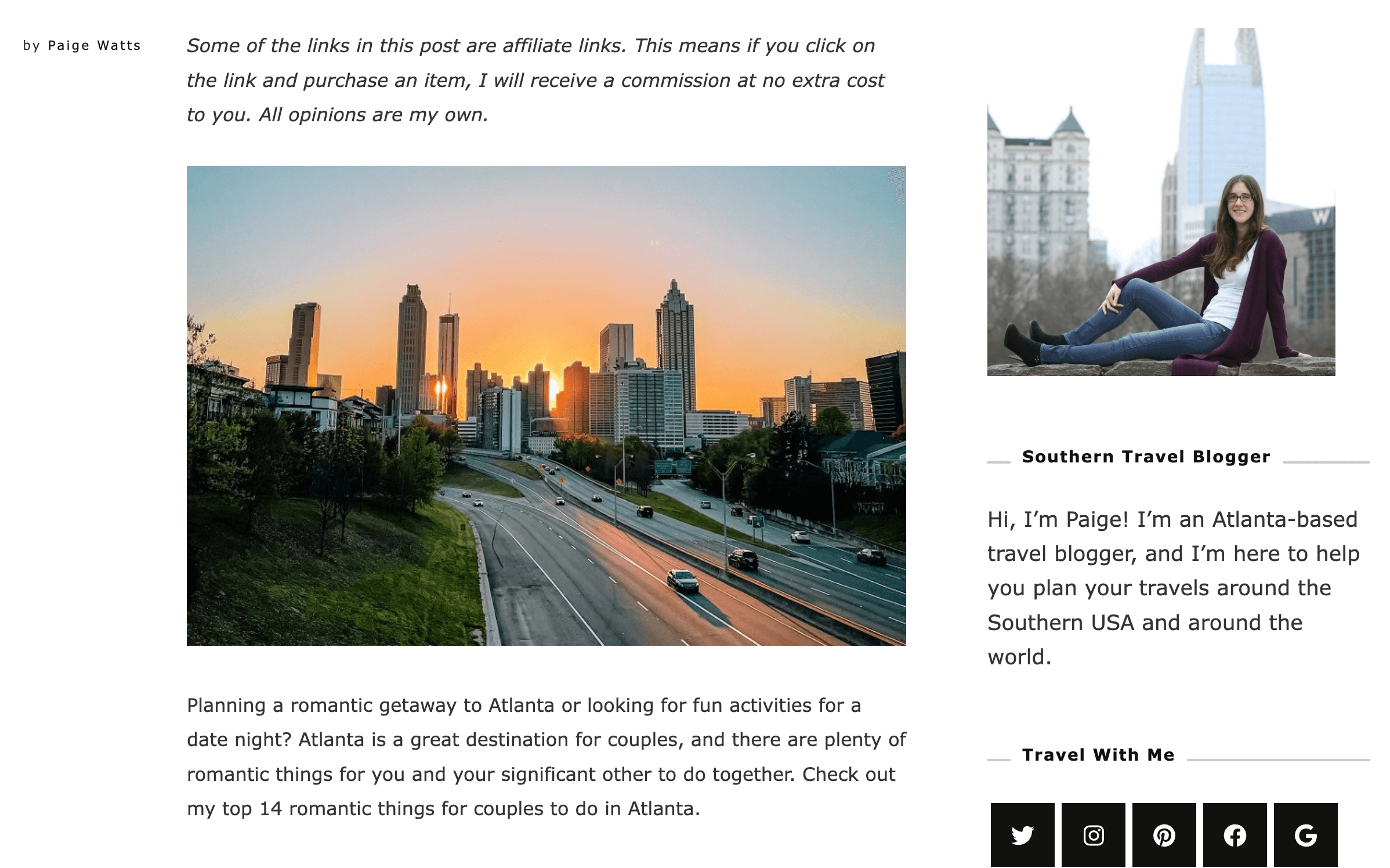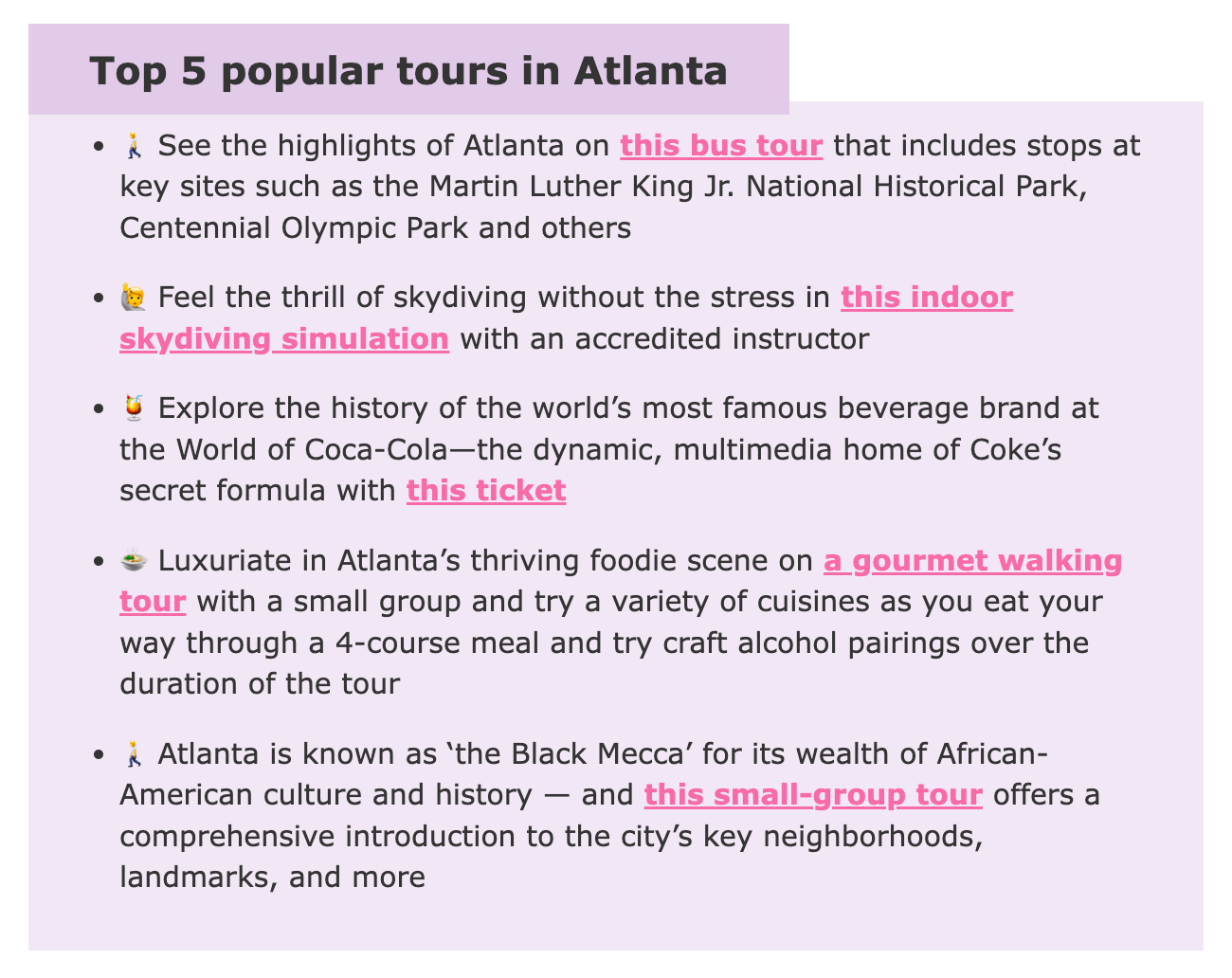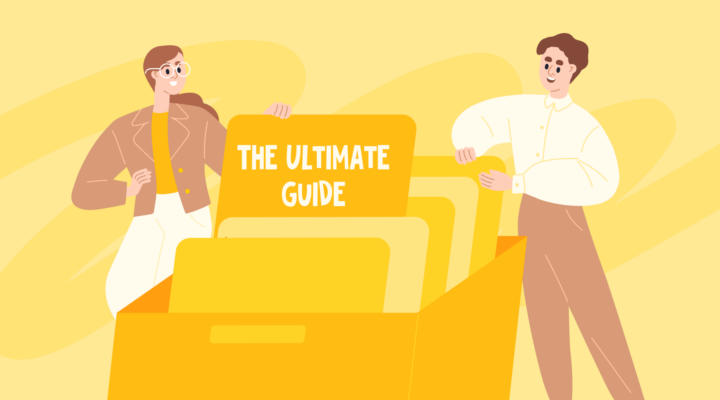How It All Began
I’m from Atlanta, Georgia. I have a degree in creative writing and have been travel blogging since 2013, when I started Paige Minds The Gap.
I’ve been traveling since I was a child. My family always took at least one big trip per year, along with a few smaller camping and beach trips. I love getting to know a place’s history (especially if there’s a castle), seeing its art and culture, and exploring its nature (especially if there are bears).
I live with my husband, who is my favorite travel companion! Even though I am a full-time travel blogger, I like to say I’m still just a part-time traveler, since I mostly travel with my husband and he works full-time (though we sure do make the most of his vacation days!)
Blogging Journey

Back when I started Paige Minds The Gap, it was mostly a travel diary (on Tumblr) for my family to read while I studied abroad in England. When I returned home, I just kept writing about interesting things in my local area, this time for the few people who had somehow found my little diary. Then I studied abroad again, this time in Ireland, and it just seemed like this was going to keep going.
It wasn’t until 2016 that I took my blog to WordPress, started self-hosting, and began thinking about monetizing it. I worked full-time and blogged part-time until 2019, when I quit my job to focus on personal writing, including the blog.
I’m most inspired by traveling somewhere new. I’m always excited to write about new destinations and re-live a trip I just took.
My blog has changed a lot along the way. It’s obviously not a study abroad blog anymore! Also, due to 2020 and COVID, I was actually able to hone in on my blog’s focus on Atlanta and Southern travel. Since we couldn’t travel very far, I started writing more and more about what was interesting around Atlanta and have been able to establish myself as a top Atlanta blog.
Nowadays, paigemindsthegap.com is my main source of income.
Difficulties I Faced
I think the hardest part initially was getting out of the diary blog mindset and getting into the problem-solving, money-making blog mindset. For example, there was a lot to learn about hosting, SEO, newsletters, and social media, not even to mention how to actually make money. And, of course, the blogging landscape is still changing every day. It required, and still requires, a lot of research, reading, and focusing on learning one thing at a time. You can’t worry about everything all at once or you’ll get overwhelmed.
The hardest thing I have to deal with right now is finding time to write new posts, update old blog posts, and the billion other things that come with being a blogger. I have to set aside time for each task. For example, I have a certain day for pitching and a day for social media. I update old posts in the mornings and write new posts in the afternoons.
Traffic
Organic search traffic from Google makes up 74% of my traffic. A few years ago, Pinterest was a huge driver of traffic, but now accounts for only about 10% of my overall traffic. Nothing beats knowing SEO for that organic traffic!

I keep my main focus on SEO and attracting organic search traffic. Pinterest is the only other traffic source I recommend spending time on, since it’s a social platform that works like a search engine. I get some traffic from other social platforms, like Facebook and Twitter, but it’s inconsistent and those readers are not very engaged. Instagram drives almost no traffic, even when I put links in my bio and stories.
I think the most important aspect of SEO is targeting the right keywords and knowing what problem your blog post is trying to solve. When you rank for the right keywords, you can reach an engaged audience that is ready to buy through your affiliate links. In addition, you can build trust with your audience because they know you’re helping them find the information they’re looking for.
The best way to achieve affiliate success is to target high-intent keywords that are commercial and transactional. In other words, you should seek to attract readers who are ready to buy.
You can always go back and edit your blog posts to attract more traffic and earn more with your affiliate links. I was able to take one of my earliest blog posts (back from when blogging was more like writing diary entries) and turn it into one of my highest traffic articles just by giving it some structure and focusing on new keywords.
Expert Tip
Seasonal posts can really help give your evergreen content a boost. Recently, I’ve started creating a seasonal posts to help bring in traffic during the slow seasons. I saw the amazing effect that having holiday content for Halloween and Christmas had on my traffic, namely consistently making the final quarter of the year my highest traffic months. So, I wanted to replicate that success throughout the year. Having content on winter destinations, romantic trips, and spring travel means I can bring in more visitors during January to March, when my traffic is historically low.
Top 5 Articles With the Highest Traffic
- 14 Romantic Things To Do for Couples in Atlanta, Georgia
- 2 Days in Atlanta, Georgia: The Perfect Weekend Itinerary
- Garden Lights, Holiday Nights at Atlanta Botanical Garden
- The 10 Best Rooftop Bars in Atlanta, Georgia For Drinks with a View
- Visiting Cagle Castle in Atlanta, Georgia
Content Creation

I write all my content myself. It’s tough to keep up with it all, but I love to write!
I come up with blog topics from my own trips. After writing hundreds of blog posts, I have a pretty good idea of which types of posts work (such as itineraries, guides, listicles, etc.), so I always think of how I can organize my trip activities into certain types of posts. I use Google to decide which keywords to target and use the “Related Searches” and “People Also Ask” sections to refine my keywords.
Expert Tip
A successful content creator keeps their audience in mind. You’re not going to make any money if you’re recommending luxury hotels on a budget city guide.
I have tried out AI a little. Right now, I use it to update old content by adding an intro paragraph. I’ve also used it for creating social media posts, like Pin descriptions and Instagram captions. I think AI can really come in handy for writing short-form content like this.
Monetization
I monetize my blog with display ads, affiliate marketing, and sponsored posts.
My greatest affiliate marketing challenge is making sales. It’s hard to start making money with travel affiliate marketing, and it really seems like you need to have substantial traffic before you start generating any sales. Because travel, hotels, and activities are such a huge investment, people aren’t as quick to buy as they would be for other niches. As a result, you really need to get some traffic before you can start making consistent money with travel affiliate links.
I use Travelpayouts for tours and activities, rental car, train, and flight affiliate programs. I also use CJ, ShareASale, and Impact for various other affiliate programs, like accommodations, travel gear, events, and attraction passes.
I primarily use affiliate links and the Deep Link Generator to send my readers to highly targeted recommendations. I use only a few widgets and almost no banners, since I’ve had no luck converting with these tools.

Text links definitely convert the best for me. The best way to use links is to link to a specific tour or hotel rather than just the home page because specific recommendations make for higher conversions. I also make sure to link to top-converting tours, from my own analytics and occasionally from Viator and GetYourGuide, or tours and hotels with great reviews because I already know that people love those products. I make sure my affiliate links stand out by using hot pink text for my links, calls-to-action, and sometimes buttons.
The best place to add affiliate links is next to relevant information. For example, linking from a hotel name or adding a sentence like “Check Prices Here” with a link. The top of a post is another great place for relevant affiliate links. I’ve had some success with a reusable box of recommended tours at the top of my Atlanta posts before getting into the main body of the article. The bottom of a post isn’t the best place for links, but it’s still a good idea to have a reusable box of travel recommendations at the bottom of each post as a last-ditch effort to get your reader to click before leaving the page.
The worst place to add any affiliate link, widget, or banner is in an irrelevant article. You’re not going to make a sale recommending a luxury hotel in a budget city guide, and you might lose your reader’s trust.
Expert Tip
Go back to old posts and add affiliate links to those that are attracting the most traffic. Not only can this approach earn you more money, it will signal to Google that you keep your content fresh and updated, which means that it provides value for your readers.
Top 5 Articles That Generate Money
- 14 Romantic Things To Do for Couples in Atlanta, Georgia
- 2 Days in Atlanta, Georgia: The Perfect Weekend Itinerary
- Top 15 Atlanta Sightseeing Tours
- The Best Winter Destinations in the South
- 10 Incredible Winter Destinations in Georgia
Analytics
I pay attention to clicks and conversions. If a link gets a lot of clicks but doesn’t convert, then it should probably be swapped out for a different link that might convert better. I use whatever analytic tools are available from each affiliate platform.
I track the performance of affiliate programs simply by looking at what converts. I make improvements by trying out new link placements, CTA wording, and widget placements. I also seek out help, by attending webinars and reading tips from the program, to see what’s working for others. I recently did an affiliate link audit with GetYourGuide to get recommendations for where to place links for certain articles. As a result, I was able to start making more sales with them. I did a similar audit with Travelpayouts and was able to add additional links to my high-converting articles. I’ve already seen sales from their recommendations.
Tours & Activities Affiliate Programs
I use Viator and GetYourGuide through Travelpayouts. Viator usually converts better since my audience is mostly US-based and US users are more familiar with Viator. Both platforms have a lot of the same tours, so I usually look on Viator first and then add GetYourGuide links if they offer something that is unique and interesting (this is where the GetYourGuide Originals come in handy!)
For my European content, I may look at GetYourGuide for tours first, since these tours will usually have more reviews than Viator. This will help my US audience still feel comfortable booking even if they’re less familiar with the platform. I also prefer the look of the GetYourGuide widget for the few times I add widgets to my posts.
I mostly use Travelpayouts for tours and activities, though I do have a few direct relationships with specialty activity providers. I was partnered with Viator through another affiliate platform, but I switched to Travelpayouts because the commission they were offering was higher.
Travelpayouts is such a great platform. I love that it’s dedicated to travel brands, which makes it so easy to find new affiliate programs to join. It’s simple to use and is a lot easier to find the tools for each program than some of the other affiliate platforms out there. Furthermore, I always enjoy their educational content, like webinars and affiliate tips, which I’ve used on many occasions to help improve my earnings.
Join the Travelpayouts Partnership Platform
Access exclusive tools and the best travel partner programs, including flights, hotels, car rental, insurance, tours and activities, all in one place.
Join TodayKey Takeaways
- The most important SEO aspect is targeting the right keywords and knowing what problem your blog post is trying to solve. When you rank for the right keywords, you can reach an engaged audience that is ready to buy through your affiliate links. This allows you to build trust with your audience because they know you’re helping them find the information they’re looking for.
- You can always go back and edit your blog posts to attract more traffic and earn more with your affiliate links. I was able to take one of my earliest blog posts (back from when blogging was more like writing diary entries) and turn it into one of my highest traffic articles just by giving it some structure and focusing on new keywords.
- A successful content creator keeps their audience in mind. You’re not going to make any money if you’re recommending luxury hotels on a budget city guide.
Want to share your story? Travelpayouts welcomes all bloggers with any travel-related experience. Write to us at ku@travelpayouts.com with the following subject: “Story for the Travelpayouts Blog”.



